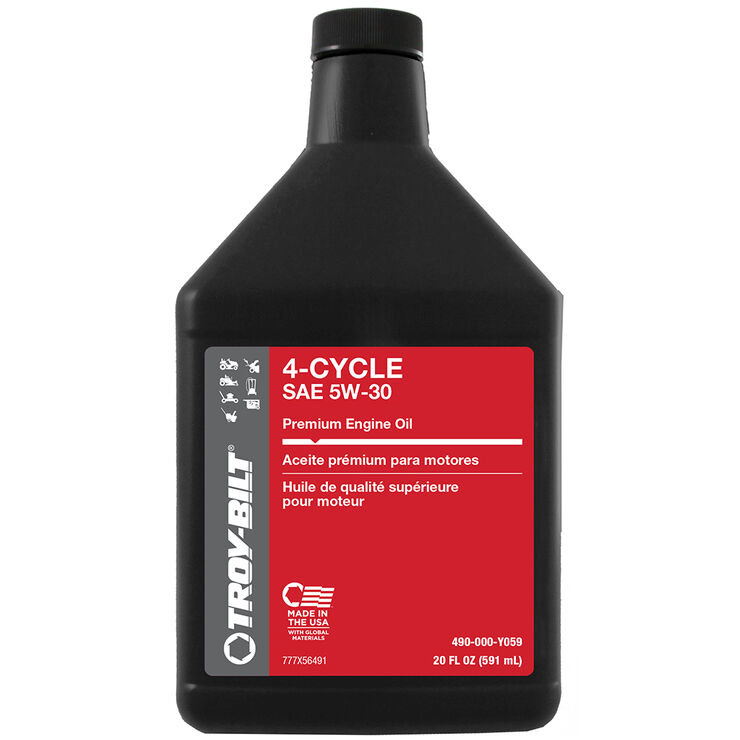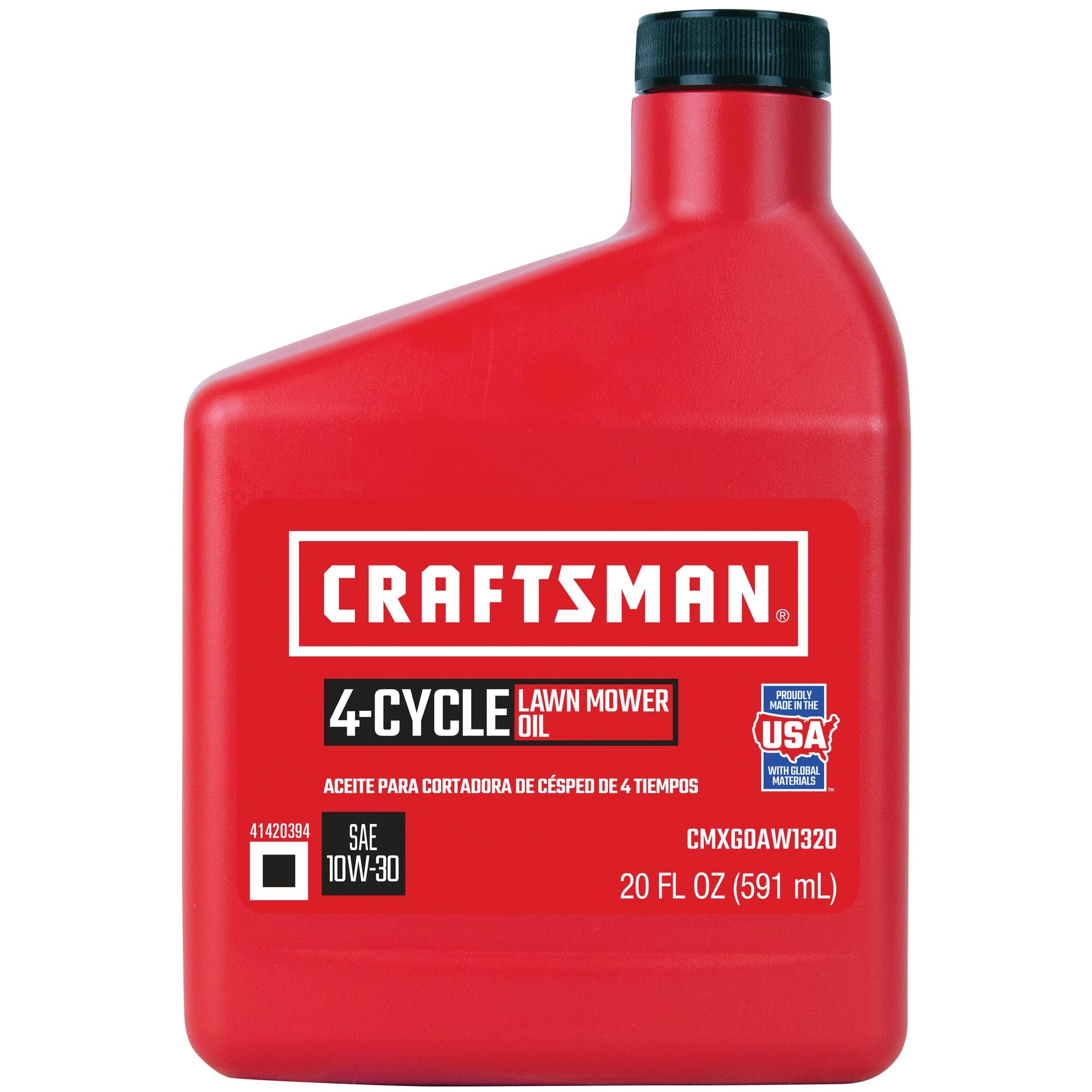When you’re ready to mow your lawn, you probably want everything to go smoothly without any hiccups. But there’s one detail that often gets overlooked – the oil in your lawn mower.
Picking the right oil isn’t just a minor detail; it’s crucial for keeping your mower running efficiently and extending its life. Ever wondered, “What kind of oil does a lawn mower take? ” You’ve come to the right place. In this post, we’ll break down the essentials so you can make an informed decision, avoid costly repairs, and keep your lawn looking its best.
Stick around to learn how choosing the right oil can save you time, money, and frustration.

Credit: www.troybilt.com
Quick Navigation
Types Of Lawn Mower Oil
Lawn mowers need oil to run smoothly. Different mowers use different oils. SAE 30 is a common type. It’s best for warm weather. SAE 10W-30 works in cold and warm temperatures. It helps the engine start easily. Synthetic oil lasts longer. It protects the engine better. Some mowers use two-stroke oil. This mixes with gasoline. Always check your mower’s manual. It tells you the right oil type. Using the wrong oil can harm the engine.

Credit: www.yardcare.com
Synthetic Vs. Conventional Oil
Synthetic oilis man-made. It is cleaner and lasts longer. It resists high heat better. Many lawn mowers use synthetic oil. It can cost more than conventional oil. But it helps engines run smoothly.
Conventional oilcomes from crude oil. It is cheaper. It protects engines well. It needs changing more often. Some lawn mowers use conventional oil. It is perfect for older engines.
Choosing the right oil is important. Read your mower’s manual. It tells you which oil to use. Keep your mower happy. Use the oil it likes best.
Factors Influencing Oil Choice
The type of engine greatly affects oil choice. Four-stroke engines usually need SAE 30 oil. Two-stroke engines might use a gas-oil mix. Always check your engine’s specs first. Right oil keeps the engine smooth.
Climate plays a role in oil selection. Cold climates may require 5W-30 oil. This oil works well in low temperatures. Warm climates often need SAE 30. It helps during hot days. Choose based on your local weather.
Always follow the manufacturer’s oil advice. They know what’s best for their machines. The manual often lists the recommended oil type. Using the suggested oil can prolong your mower’s life. Ignoring advice might harm the engine.
Viscosity Grades Explained
Oil viscosity is about thickness. It tells how easily oil flows. Thicker oils are better in hot weather. They keep parts from wearing out. Thinner oils flow easily in cold. They help engines start quickly. Each oil has a grade. This grade shows how it works in heat or cold. SAE 30 is a common oil. It is good for warm places. SAE 10W-30 works in many temperatures. It is helpful for cold starts.
Oil can be single-grade or multi-grade. Single-grade oils suit stable temperatures. Multi-grade oils work in both hot and cold. This makes them versatile. It’s important to use the right oil. Your lawn mower needs the correct flow. Always check the manual. It tells you the best oil for your mower.
Two-stroke Vs. Four-stroke Engines
Lawn mowers use different types of engines. The two main types are two-strokeand four-strokeengines. Two-stroke engines are light and simple. They run on a mix of oil and gas. This means you need to mix oil with the gas before filling up. They are great for small jobs. Easy to start, but they can be noisy.
Four-stroke engines are different. They have separate compartments for oil and gas. This means you don’t mix them. These engines are common in bigger mowers. They run smoother and are quieter. They need regular oil changes. This keeps them running well. Which engine is better? It depends on your needs.
Changing Lawn Mower Oil
Get the right tools for the job. You need a wrench, an oil pan, and new oil. Don’t forget a funnel. It helps to avoid spills. Keep a rag handy too. It helps clean any mess. Having the right tools makes the job easier. You save time. You avoid frustration.
First, turn off the mower. Allow it to cool down. Then, locate the oil cap. Remove it carefully. Place the oil pan under the mower. Let the old oil drain out. Once it’s empty, replace the cap. Pour new oil using the funnel. Check the oil level. Add more if needed. Finally, clean up any spills with the rag.
Never pour used oil on the ground. It harms the environment. Take it to a recycling center. Many auto shops also accept used oil. Proper disposal helps keep nature clean. It’s important for everyone. Ask an adult if you need help. Always care for the Earth.
Maintenance Tips For Lawn Mower Engines
Keep your lawn mower engine happy with regular oil changes. Use the right type of oil for the engine. Most lawn mowers need SAE 30 oilfor warm weather. For colder times, consider using SAE 5W-30. Check the oil level before each use. A dipstick can help you see if it’s low. Always add oil in small amounts to avoid overfilling.
Clean the air filter often. A dirty filter makes the engine work harder. Replace it if it’s too dirty. Spark plugs should be checked every season. Replace them if they look worn out. This helps the engine start smoothly. Remember to keep the mower blades sharp. Sharp blades cut grass better and keep the engine from straining.

Credit: www.craftsman.com
Conclusion
Choosing the right oil keeps your lawn mower running smoothly. Regular maintenance helps avoid costly repairs. Check your mower’s manual for oil type recommendations. Use fresh oil for optimal performance. Consider weather conditions and engine type. Synthetic oils work well in varying temperatures.
Change oil regularly for engine longevity. Clean your mower’s air filter for better efficiency. Proper oil ensures smooth operation and a tidy lawn. Keep your mower in top shape with the right oil. Simple steps make a big difference in mower care.
Enjoy a well-kept yard with these easy tips.